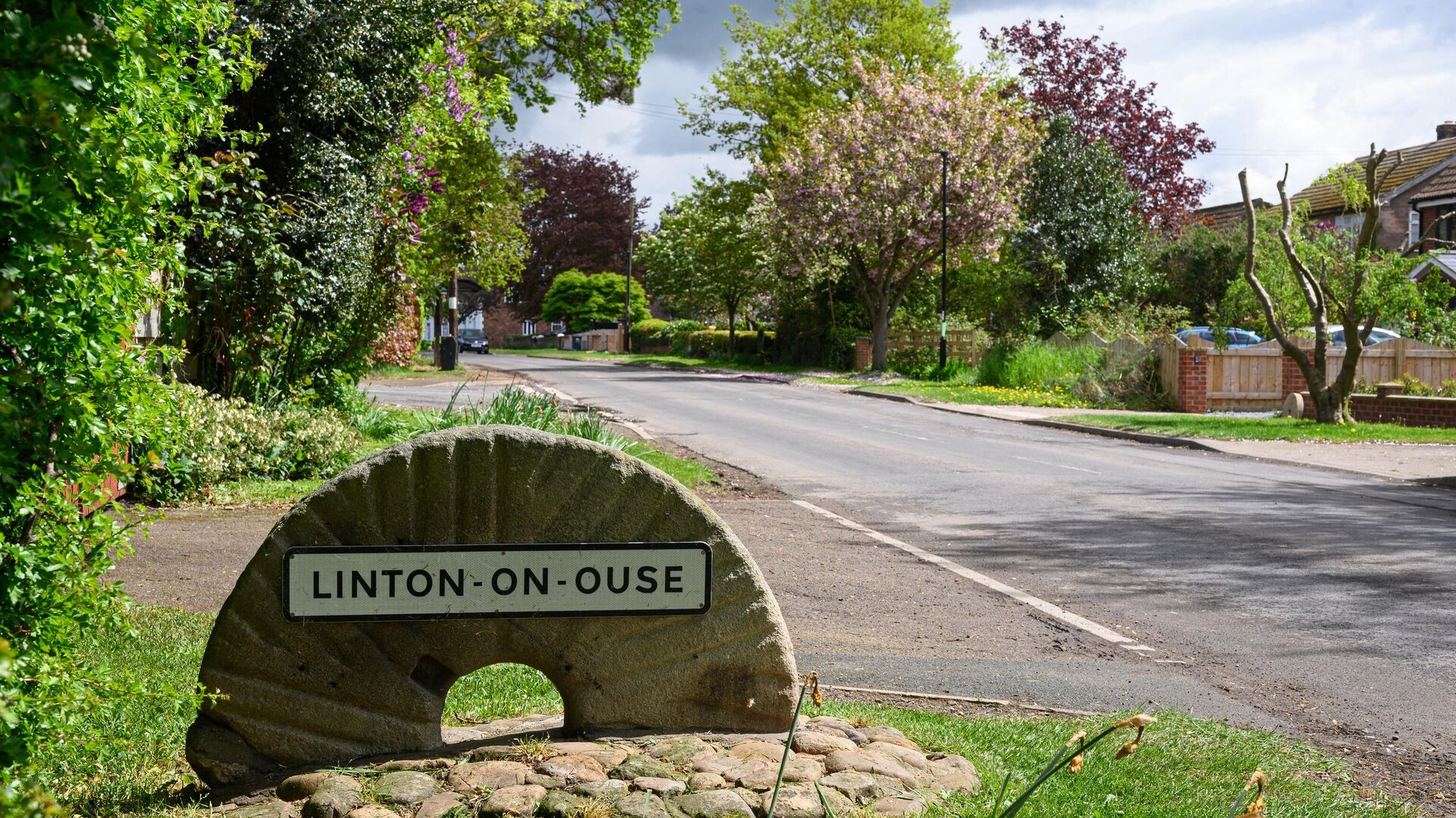Residents of Tiny UK Village of 700 in Fear Amid Gov't Plan to Place 1,500 Migrants There
12:43 GMT 08.05.2022 (Updated: 15:19 GMT 28.05.2023)

© AFP 2023 / OLI SCARFF
Subscribe
The UK Home Office has come up with a plan for dealing with large numbers of migrants, pushing for a system of Greek-style migrant camps. One of the first such camps in Britain is set to be built at the abandoned RAF military base in the village of Linton-on-Ouse. However, the locals are not fond of the idea.
Several hundred Linton-on-Ouse residents are scared and shocked after the British government announced its plan to dispatch some 1,500 migrants to the abandoned military base in the middle of the village, The Daily Mail reported.
While practically all the residents of the tiny, quiet village are all in for offering help to those in need, they feel that the number of migrants (more than double the 700 existing residents) is just too overwhelming for the place.
"It is just wrong, totally wrong, for 1,500 single men to be put in a village of only 700," Linda Scarbro, a retired librarian, told The Daily Mail. "It is not NIMBY-ism," she continues, referring to the "Not In My Backyard" sentiments. "Our country has always been welcoming to people in need. But it is just the wrong plan, the wrong place."

Screenshot
© Photo : Twitter / @Olgachristie
The residents added that the village simply lacks the necessary services that the migrants will need: Linton-on-Ouse only has one shop that primarily sells newspapers, enjoys no police presence, has a "failed" sewage system and the connection to the nearest city is limited to one bus that goes to York four times a day.
Aside from this, locals are understandably terrified about 1,500 "young men roaming around the village", with some women already saying they will be scared to leave their house alone.

Screenshot
© Photo : Twitter / @nogoodgods
"Nobody wants this. Nobody. Not the far-rights, not the villagers, not refugee charities, only the Home Office wants this to happen," said Nicola David of Ripon City of Sanctuary, a group that helps refugees.
She acknowledged that the other government plan regarding the refugees, which envisages sending them to Rwanda, is "massive and bizarre". However, she argued, there is a chance it would not be a go eventually, and the prospect of opening a refugee centre in North Yorkshire is far more problematic.
According to the Home Office, the Linton-on-Ouse centre will "help end our reliance on expensive hotels which are costing the taxpayer £4.7 million a day".
"We are consulting with local stakeholders about the use of the site," a Home Office spokesperson told The Daily Mail.
However, according to the residents themselves, there were no consultations, and the locals were first informed about the government plans by radio and TV news. The local council is currently mounting a legal challenge because it considers the actions of the Home Office unlawful, the report noted.
The UK government continues to struggle with migrants, with the Home Office rolling out the Rwanda plan aside from its intention to build "Greek-style" reception centres. The plan to send illegal migrants to Rwanda is aimed to show them they will not be allowed to stay in the UK and thus deter them from coming, but the scheme was criticised for being massive and way too expensive, aside from potentially harming migrants.
Under the plan, those whose applications in Rwanda will be greenlit would be able to stay in the country (but prohibited to return to the UK), and those less luckily will be deported to their home country.
The government estimated the cost of the scheme to be some £120 million (~$148 million), but critics argue the costs will end up being far bigger.


